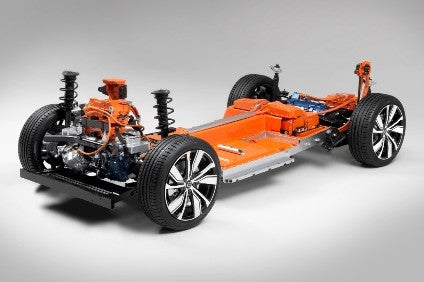
Geely's Volvo Cars has released more details of its first fully electric SUV – the XC40.
The automaker claimed that, keeping with tradition, it is also introducing "one of the safest cars on the road, despite a fresh set of challenges presented by the absence of an internal combustion engine".
"Regardless of what drives a car forward, be it an electric machine or combustion engine, a Volvo must be safe," said the automaker's head of safety Malin Ekholm.
"The fully electric XC40 will be one of the safest cars we have ever built."
Building on the high safety standards of the combustion XC40 line, safety engineers had to completely redesign and reinforce the frontal structure to deal with the absence of an engine, meet Volvo's own high safety requirements and help keep occupants as safe as ever.
"The fundamentals around safety are the same for this car as for any other. People are inside, and the car needs to be designed to be safe for them," said Ekholm.
How well do you really know your competitors?
Access the most comprehensive Company Profiles on the market, powered by GlobalData. Save hours of research. Gain competitive edge.

Thank you!
Your download email will arrive shortly
Not ready to buy yet? Download a free sample
We are confident about the unique quality of our Company Profiles. However, we want you to make the most beneficial decision for your business, so we offer a free sample that you can download by submitting the below form
By GlobalDataTo help keep passengers safe and the battery intact in the event of a collision, Volvo also developed a new and unique safety structure for passengers and battery alike.
The battery is protected by a safety cage which consists of a frame of extruded aluminum and has been embedded in the middle of the car's body structure, creating a built-in crumple zone around the battery.
The battery's placement in the floor of the car also has the benefit of lowering the centre of gravity for better protection against roll overs.
Meanwhile, the car's body structure has been reinforced front and rear.
The electric powertrain has been integrated into the body structure to achieve a better distribution of collision forces away from the cabin and reduce the strain on occupants.
The battery-powered XC40 also introduces new active safety technology and is the first Volvo equipped with a new advanced driver assistance systems (ADAS) sensor platform with software developed by Zenuity, the joint venture company owned by Volvo Cars and Veoneer.
The new ADAS platform is a modern, scalable active safety system that consists of an array of radars, cameras and ultrasonic sensors. Because of its scalable nature, it can easily be developed further and lays the foundation for the future introduction of autonomous drive technology.
The model will be publicly unveiled on 16 October.



